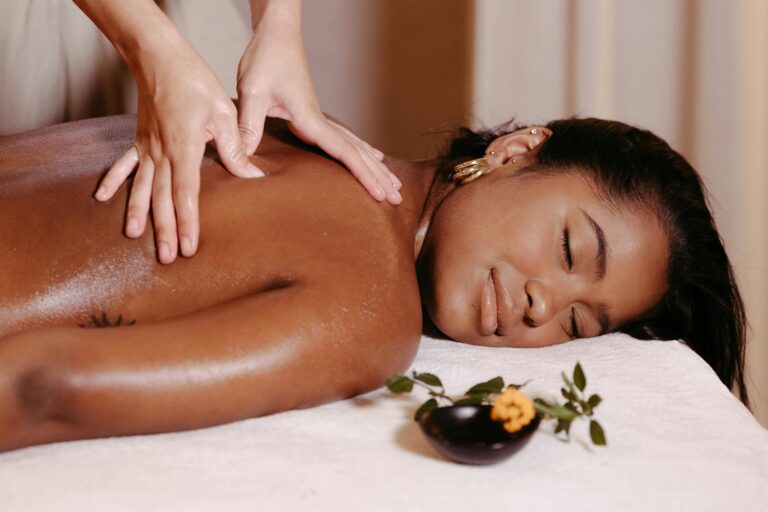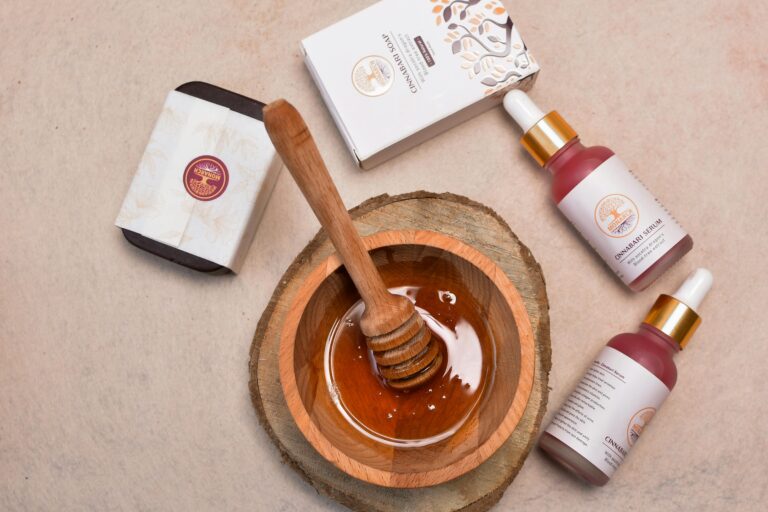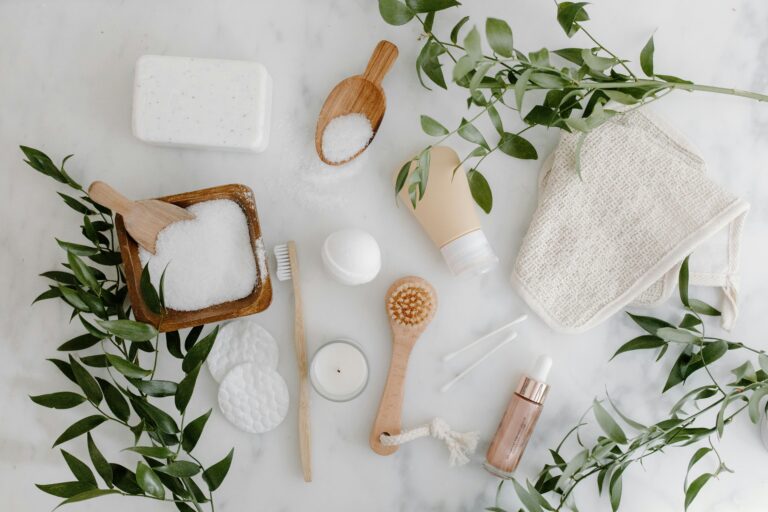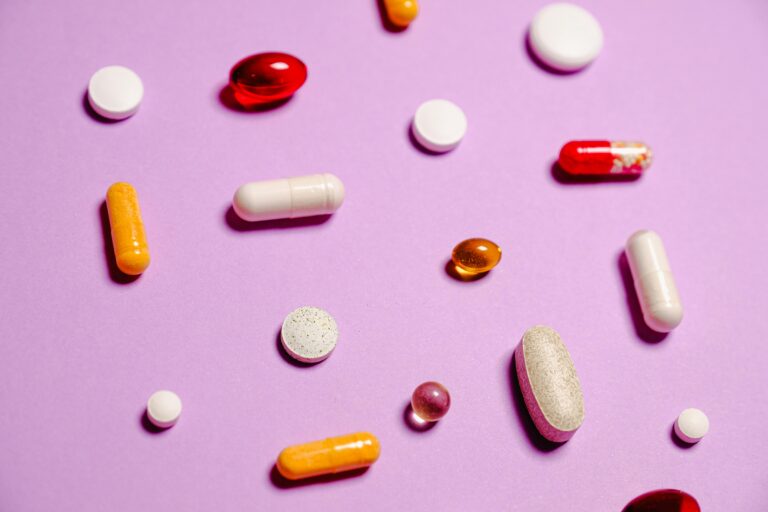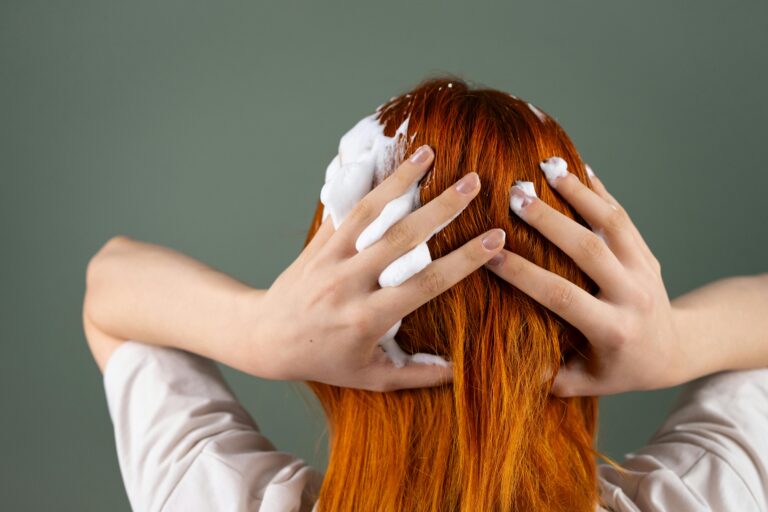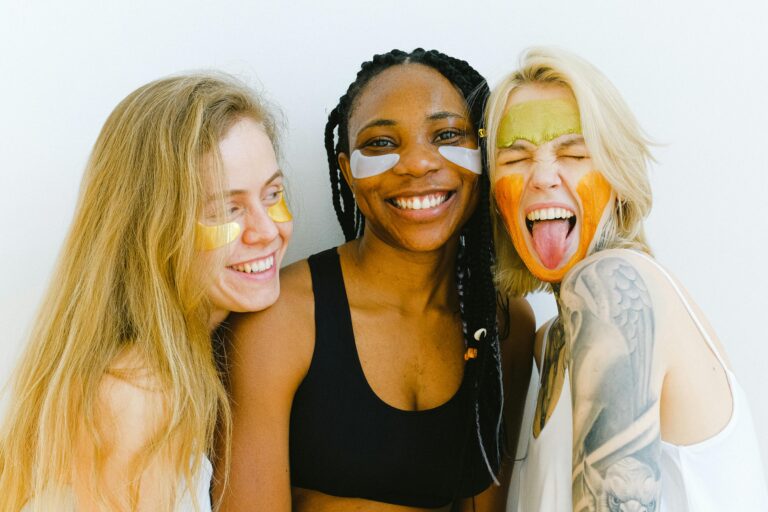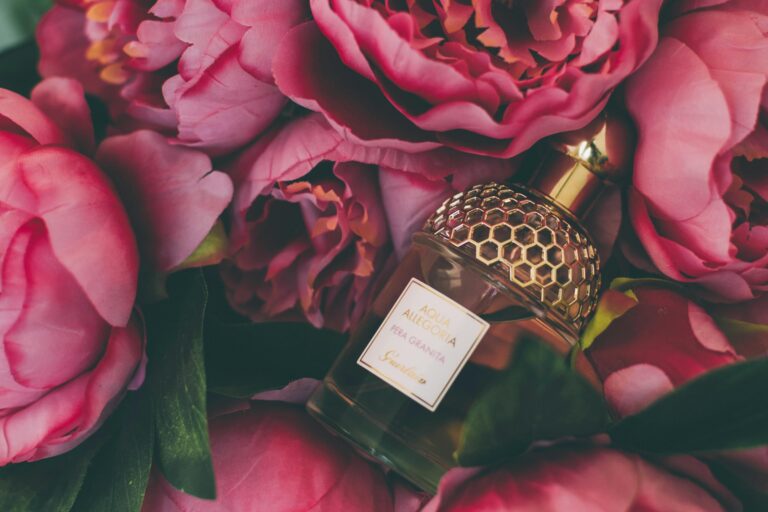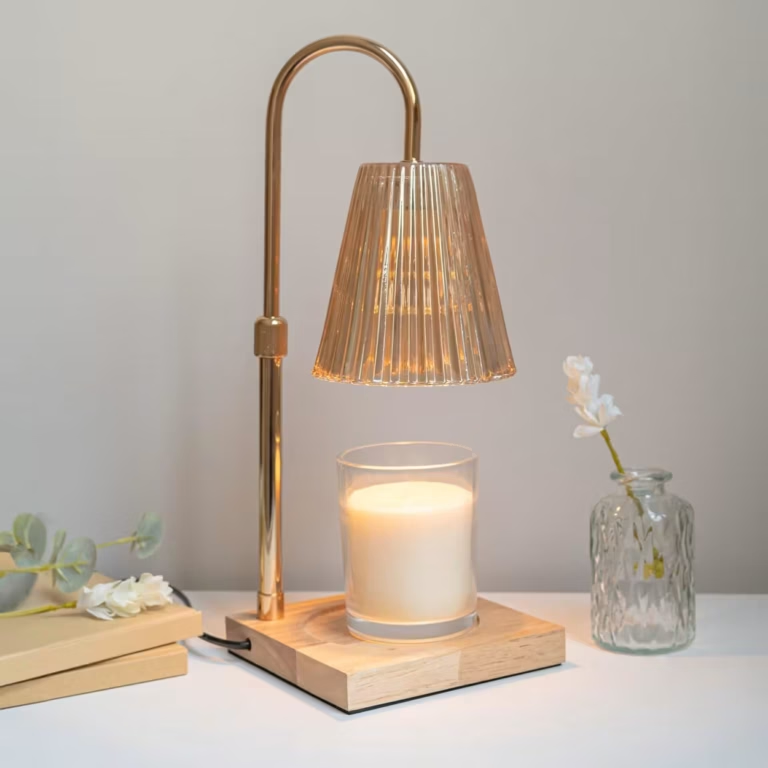Best 5 Skin Supplements for Acne and Oily Skin
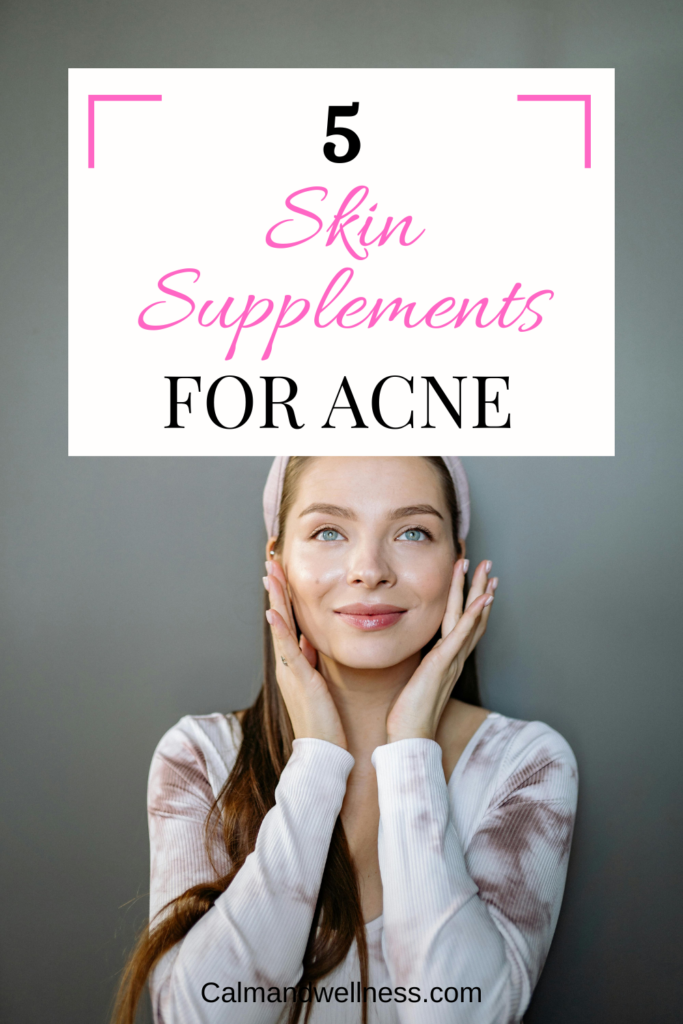
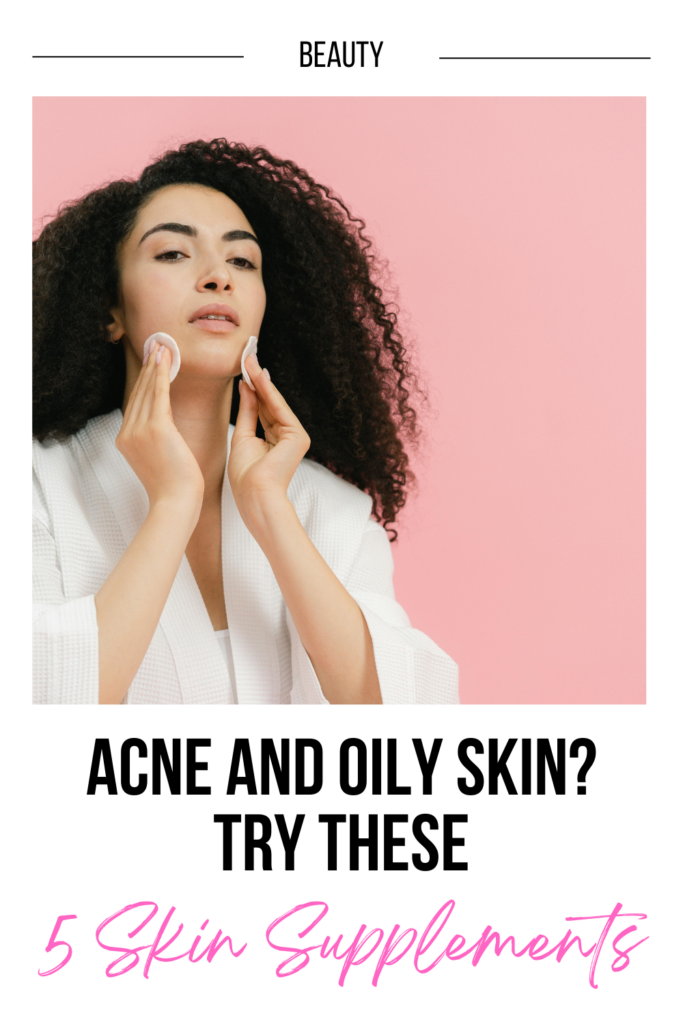
This site contains affiliate links, view the disclosure for more information.
Today we’ll discuss about skin supplements and acne . And if you’re one of the 50 million Americans battling these pesky invaders, you’ve probably got a bathroom cabinet that looks like a skincare graveyard.
Here’s the plot twist: beautiful skin doesn’t start with what you slather on your face—it starts with what you put in your body! Today we’ll discover how certain supplements could transform your skin from the inside out.
About Skin Supplements
Healthy, glowing skin isn’t just about what you apply on the surface—it starts from within. If you struggle with acne and oily skin, you know that breakouts and excess sebum production often have deeper causes, such as hormonal imbalances, inflammation, and nutrient deficiencies.
Skin supplements can help by providing essential vitamins, minerals, and antioxidants that regulate oil production, reduce inflammation, repair your skin barrier and support overall skin health.
In this guide, I’ll share the science-backed supplements that can help you achieve clearer, less oily skin without needing a PhD in dermatology.
1. DIM : An Unexpected Ally

Ah, hormonal acne—those delightful chin visitors that show up monthly like they’re paying rent! DIM (Diindolylmethane) is basically the landlord that evicts these unwanted tenants by balancing your estrogen metabolism.
So, what is DIM? It’s a natural compound derived from the digestion of indole-3-carbinol (I3C), which is found in cruciferous vegetables like broccoli, cauliflower, kale, and Brussels sprouts. It is known for its potential hormone-balancing properties, particularly in estrogen metabolism.
Basically this broccoli-derived compound (yes, your mom was right about eating vegetables) helps your liver process hormones more efficiently, preventing the hormonal chaos that triggers those painful underground zits.
This skin supplement isn’t an overnight miracle. Most users notice significant improvement after 6-8 weeks, which is faster than waiting for that one cystic pimple to finally disappear on its own!
How does DIM balance estrogen levels?
Bear with me through some science-y bits: DIM transforms bad estrogens into good ones like a fairy godmother for your hormones!
Does DIM reduce cystic acne breakouts?
Yes, by addressing the hormone imbalances, pair your DIM with omega-3s for a tag-team approach that makes cystic acne run scared.
Most users see fewer new cysts within 4-6 weeks and complete resolution within 2-3 months.
DIM vs Zinc: Which is better for acne?
Instead of picking a winner, why not have both in your skincare arsenal?
DIM tackles those cyclical jawline breakouts that sync up with your hormones, while zinc provides broad anti-inflammatory and bacteria-fighting benefits across your entire face.
Combined, they’re the dynamic duo your acne doesn’t want to meet—addressing multiple causes simultaneously.
Best DIM supplements for clear skin
Shopping for DIM supplements is like dating—you want quality without too many red flags!
Look for BioResponse DIM, Smoky Mountain Naturals and Nutricost make solid options that won’t require a second mortgage. Aim for capsules with 100-200mg of active DIM—and if they contain vitamin E or BioPerine, even better!
Got a stomach that complains about everything? Opt for enteric-coated formulas. They bypass your stomach’s drama and dissolve in your intestines instead. Your skin gets the benefits without your digestive system throwing a tantrum. Win-win!
Benefits of DIM for Acne
- Balances Estrogen Levels: Converts harmful estrogens into beneficial ones.
- Reduces Cystic Acne: Addresses deep, painful breakouts.
- Regulates Oil Production: Helps control excess sebum.
2. Probiotics as Skin Supplements

Plot twist: your gut has been gossiping about you to your skin this whole time! These microscopic matchmakers called probiotics help end this toxic relationship by healing your gut microbiome, which has a direct hotline to your face.
A 2020 study found that people taking daily probiotics saw their inflammatory acne drop by 32% in just 12 weeks. These friendly bacteria reduce the internal inflammation that triggers breakouts while improving nutrient absorption that your skin needs to repair itself.
Choose a high-quality probiotic with at least 10 billion CFUs (that’s Colony Forming Units, not Cute Fluffy Unicorns, unfortunately) and stick with it for at least 3 months.
Best Probiotic strains for clearer skin
Not all probiotics are created equal—some are skin superstars while others are just…there. For acne improvement, you’ll want specific strains.
Lactobacillus acidophilus and Lactobacillus plantarum are the lead singers—they directly fight P. acnes bacteria while calming skin inflammation. Meanwhile, Bifidobacterium bifidum and Bifidobacterium longum are the bass players, regulating oil production and strengthening your skin barrier.
How does gut health affect acne?
Ever noticed how a weekend of pizza and beer leads to Monday morning pimples? That’s your gut and skin having a toxic relationship through something scientists call the “gut-skin axis”
When your gut lining gets compromised (aka “leaky gut”—yep, as gross as it sounds), inflammatory toxins escape into your bloodstream like jailbreakers and trigger immune responses that show up as acne. It’s like your gut problems are being projected onto your face!
Probiotics help seal this barrier, preventing these inflammatory troublemakers from causing chaos while reducing the overall inflammatory markers that make your acne angry and red. Plus, a healthy gut microbiome properly processes hormones like estrogen, helping maintain hormone balance that directly impacts your skin’s oil factory settings.
Can Probiotics reduce inflammation and breakouts?
Probiotics are basically tiny firefighters for the inflammation blazing across your skin! These beneficial bacteria produce short-chain fatty acids that tell your immune system to calm down and stop overreacting to everything.
For maximum anti-inflammatory benefits, choose probiotics containing Lactobacillus rhamnosus GG and Bifidobacterium lactis HN019. Studies show these strains significantly reduce inflammatory cytokines (the dramatic messengers telling your skin to freak out).
Pro Tip: Want to supercharge these effects? Add fermented foods like kimchi and kefir to your diet alongside your supplements.
Probiotics vs Prebiotics: Which helps skin more?
While probiotics introduce beneficial bacteria directly, prebiotics provide the specialized plant fibers that feed your existing good bacteria.
You can use both: probiotics deliver immediate reinforcements while prebiotics ensure these beneficial microbes thrive long-term. Start with a high-quality probiotic containing multiple acne-fighting strains, then add a prebiotic supplement with inulin or FOS.
Benefits of Probiotics for Acne
- Fights P. acnes Bacteria: Lactobacillus strains directly combat acne-causing bacteria
- Reduces Inflammation: Soothes redness and irritation
- Balances Hormones: Supports estrogen metabolism and gut-skin connection
3. Spearmint Tea Extract
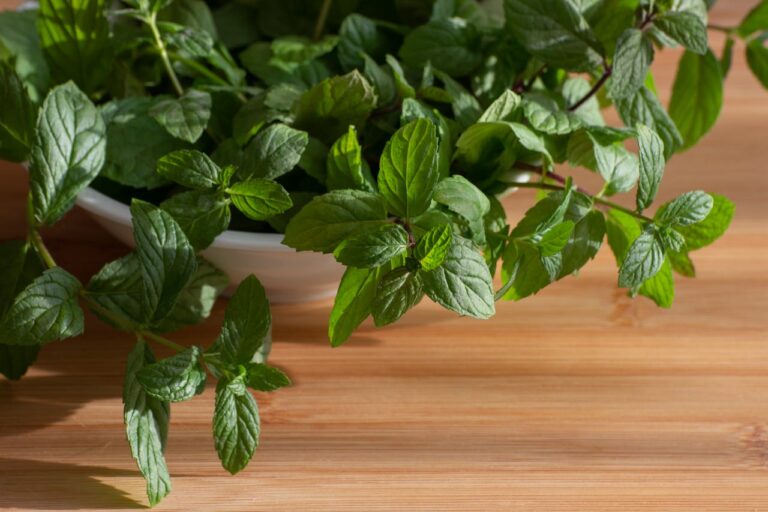
Who knew that the mint in your mojito could be the secret weapon against chin zits? Spearmint extract is nature’s chill pill for hormonal acne, working its magic by naturally lowering androgen levels in women.
In a study that made dermatologists do a double-take, women drinking spearmint tea twice daily saw their free testosterone levels drop by 30% after just a month! This isn’t some sketchy internet rumor—this is published research that your hormonal breakouts don’t want you to know about!
This anti-androgenic effect directly reduces that oil slick on your T-zone that leads to clogged pores and angry, red pimples. For best results, drink 1-2 cups of organic spearmint tea daily or take a standardized extract.
Focus on consistency during PMS week when hormonal acne typically throws its biggest tantrum. Your skin will go from “crime scene” to “did you get a facial?” faster than you can say “peppermint’s cooler cousin”
How does Spearmint lower androgen levels?
In normal-person speak? Spearmint tells testosterone to take it down a notch before it causes oil production to go wild on your face!
By blocking this conversion process, spearmint effectively lowers free testosterone levels and reduces the androgen activity that makes your face shinier than a glazed donut.
These compounds also give your liver a helping hand in processing and eliminating excess hormones. This gentle yet effective approach makes spearmint particularly valuable for women with PCOS or anyone whose breakouts seem to be following a hormonal schedule.
Does Spearmint help with oily skin?
By naturally reducing testosterone and DHT levels, spearmint decreases the signals telling your sebaceous glands to produce oil.
Within 2-3 weeks of regular consumption, most people notice their blotting paper usage drops dramatically as oil production normalizes. Your makeup actually stays where you put it, and you no longer need to powder your nose every hour on the hour!
For enhanced oil control you can combine internal spearmint supplementation with topical products containing niacinamide or green tea extract. It’s like creating a comprehensive oil management system—regulating sebum both internally through hormone balance and externally through direct sebum inhibition.
Spearmint vs Green Tea: Which is better for acne?
Spearmint excels at taming hormonal acne, green tea, with its EGCG antioxidants, provides broader anti-inflammatory effects that work well for scattered, non-hormonal breakouts.
Why choose when you can have both in your acne-fighting arsenal?
Drink spearmint tea in the morning to balance hormones and green tea in the afternoon for an antioxidant boost. It’s like having both a specialist AND a general practitioner for your skin!
This dynamic duo addresses multiple acne triggers simultaneously, leaving your skin clearer than your schedule after canceling plans (we’ve all been there). Your face will literally be thanking you with its newfound clarity!
Best Spearmint supplements for acne-prone skin
Tea or capsules? That’s the spearmint dilemma. Tea provides a lovely self-care moment (plus you get to feel fancy holding a mug), while capsules offer grab-and-go convenience for when life gets chaotic (which is…always?).
- Capsule fans should look for supplements containing pure spearmint extract standardized to 5-7% rosmarinic acid, without fillers that read like a chemistry exam.
Swanson and Nature’s Way make reliable options that deliver consistent results.
Either way, your hormones get the message to behave themselves, and your skin reaps the rewards!
- For tea enthusiasts, brands like Traditional Medicinals and Buddha Teas offer high-quality organic options—brew for 5-7 minutes to extract maximum benefits.
Pro tip: making a large batch and keeping it in the fridge makes it easy to get your daily dose without the daily brewing commitment.
Benefits of Spearmint for Acne
- Reduces Androgen Levels: Lowers free testosterone by 30%
- Controls Sebum Production: Decreases oiliness over time
- Fights Hormonal Breakouts: Effective for jawline and chin acne
4. Vitamin B5 (Pantothenic Acid)
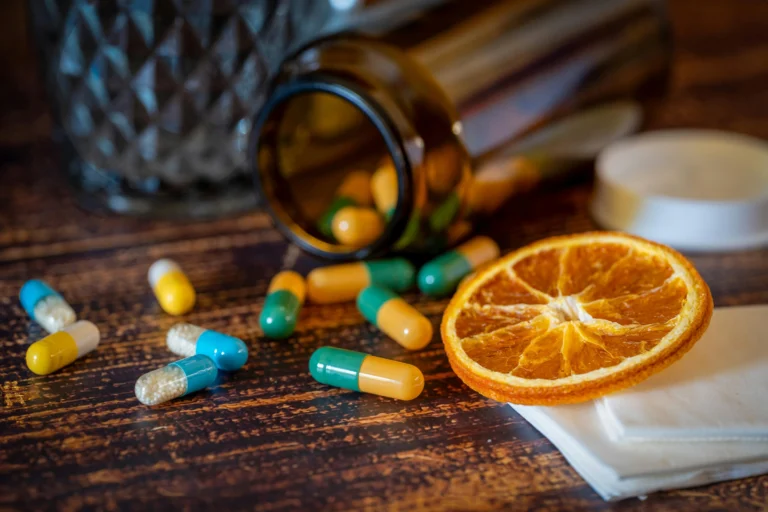
This water-soluble vitamin dramatically reduces oil production by regulating your sebaceous glands from within—like installing a dimmer switch on your skin’s oil factory.
Studies show that high-dose B5 supplementation can reduce sebum output by up to 67% in acne-prone individuals within 8-12 weeks. That’s not a typo—TWO-THIRDS less oil!
Best B5 supplements for acne-prone skin
Not all B5 supplements deserve a spot in your medicine cabinet’s VIP section. Look for pharmaceutical-grade pantothenic acid from brands that don’t sound like they were named by throwing darts at a dictionary.
Reputable options include Now Foods, Solgar, or Pure Encapsulations. If swallowing pills isn’t your idea of fun, some prefer pantethine (the active form of B5) at slightly lower doses daily.
For those with sensitive stomachs that dramatize everything, time-release formulations help minimize digestive complaints while maintaining steady blood levels throughout the day. It’s like giving your body a slow drip of oil
Benefits of Vitamin B5 for Acne
- Reduces Oil Production: Decreases sebum by up to 67%
- Supports Wound Healing: Helps repair acne lesions faste
- Prevents Clogged Pores: Improves skin texture and clarity
5. Zinc (Zinc Picolinate or Zinc Gluconate)
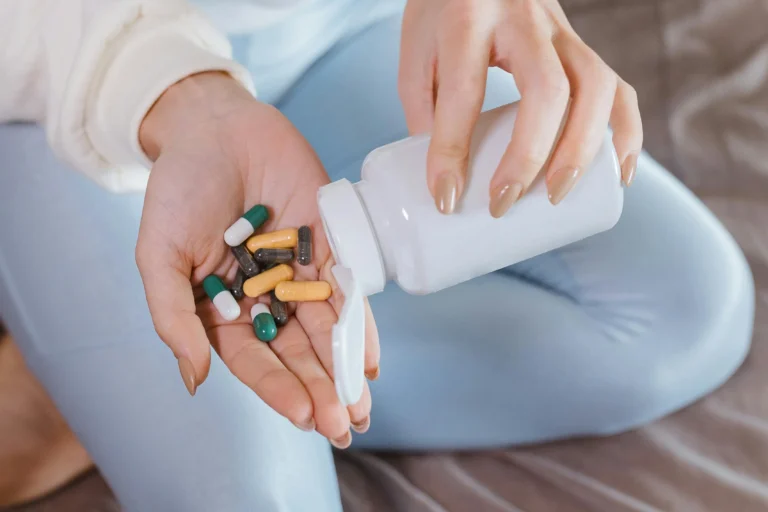
This mineral is like the Swiss Army knife of supplements—it fights bacteria, calms inflammation, AND balances hormones. Talk about an overachiever!
As a bonus, zinc activates natural killer cells (which, despite their terrifying name, are actually your friends) to help clear bacteria and debris from inflamed follicles. This accelerates healing and tells your pimples their time is up.
For inflammation-fighting superpowers, pair your zinc with omega-3 fatty acids from fish oil or algae sources.
Research shows that acne sufferers typically have 24% lower zinc levels than their clear-skinned counterparts.
Coincidence? I think not! Zinc directly zaps those P. acnes bacteria (the troublemakers behind your breakouts) while simultaneously telling your skin’s inflammatory response to take a chill pill.
For best results, take elemental zinc daily WITH food (unless you enjoy that special nauseous feeling). Be patient, though—this isn’t an overnight miracle. Most people start seeing improvements around the 4-6 week mark as zinc levels build up in your system.
Pair it with vitamin A for a dynamic duo, they work together to regulate skin cell turnover and prevent pore blockages.
Not all zinc is created equal, zinc picolinate is the premium pick. It enters your bloodstream more efficiently than other forms, meaning you get more bang for your buck (and fewer digestive complaints).
Look for supplements with 15-30mg of elemental zinc per serving from brands like Thorne Research, Pure Encapsulations, or Garden of Life. If your stomach throws a tantrum at the mere thought of zinc, try zinc bisglycinate—it’s the gentle soul of the zinc family.
Whatever you do, avoid zinc oxide for acne purposes, it’s great for sunscreen but terrible for absorption when swallowed. And for bonus points, choose formulations that include copper (to prevent imbalances), vitamin C (for better absorption), and selenium (for antioxidant tag-team action). Your skin will thank you by actually clearing up instead of just making empty promises!
Does Zinc help with post-acne scars?
Just when you thought zinc couldn’t get any more impressive, it turns out it’s also the MVP for minimizing those annoying souvenirs acne leaves behind! Zinc plays a crucial role in proper wound healing and collagen synthesis—the building blocks of scar repair.
This mineral activates enzymes that help remodel damaged tissue—while simultaneously stimulating fibroblasts to produce new collagen. Zinc also regulates inflammation during the healing process, preventing the excessive inflammatory response that often leads to more visible scarring.
Zinc vs Vitamin A: Which is more effective for acne?
It’s the ultimate skin supplement showdown!
Zinc excels at reducing inflammation and killing bacteria, making it perfect for angry, red, infected breakouts. Meanwhile, vitamin A (as beta-carotene or retinol) specializes in preventing dead skin cells from clogging pores and regulating oil production—ideal for comedonal acne (those stubborn blackheads and whiteheads).
Here’s the plot twist: they work BETTER together than separately! Zinc enhances vitamin A’s absorption and utilization, while vitamin A supports zinc’s anti-inflammatory effects. For truly transformative results, take zinc alongside vitamin A daily (as beta-carotene, not retinol, unless prescribed by a doctor). This power couple addresses multiple causes of acne simultaneously: excess oil, clogged pores, bacteria, and inflammation.
Benefits of Zinc for Acne
- Fights Acne-Causing Bacteria: Directly targets P. acnes
- Reduces Inflammation: Calms redness and irritation
- Speeds Up Skin Healing: Helps fade acne scars
6. Comparison Table Between Skin supplements
| Supplement | Benefit | Best For | Suggested Brand |
| DIM | Balances estrogen | Hormonal acne, cystic acne | Smoky Mountain Naturals DIM |
| Probiotics | Improves gut health | Inflammatory acne, leaky gut | Lactobacillus & Bifidobacterium formulas |
| Spearmint | Lowers testosterone | Hormonal acne, oily skin | Traditional Medicinals Tea, Swanson Capsules |
| Vitamin B5 | Reduces oil production | Excessively oily skin | Now Foods Pantothenic Acid |
| Zinc | Anti-inflammatory & antibacterial | All acne types, post-acne scars | Thorne Research Zinc Picolinate |
If you’re struggling with persistent acne, incorporating these supplements into your routine could be the missing piece of your skincare puzzle. Remember, results take time—most people see noticeable improvements within 4-12 weeks. Pair these supplements with a balanced diet, plenty of water, and a solid skincare routine for optimal results!
The content on Calm & Wellness is for informational purposes only and is not intended as medical advice, diagnosis, or treatment, always consult with a qualified healthcare professional
READ ALSO
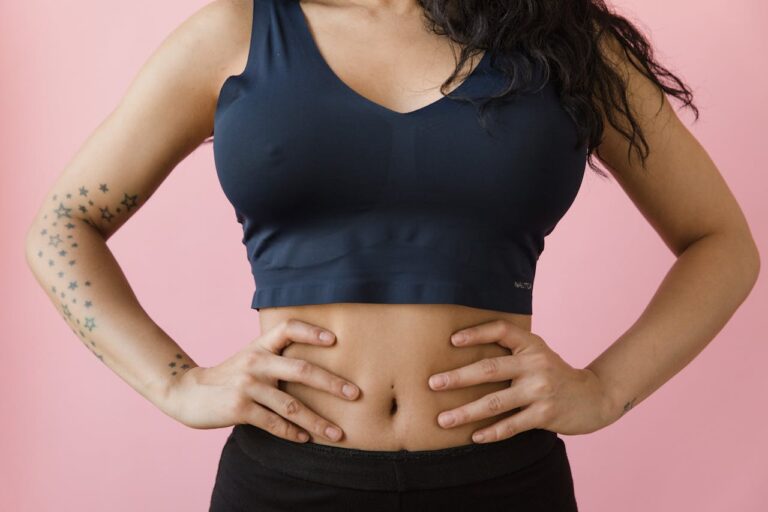
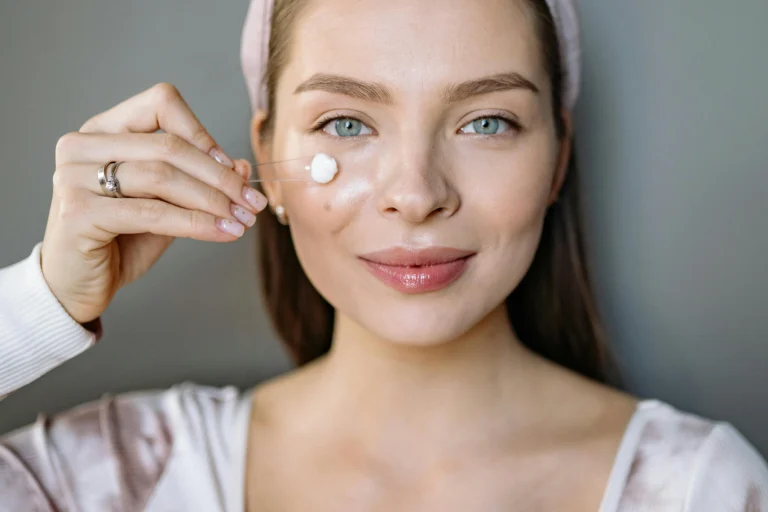
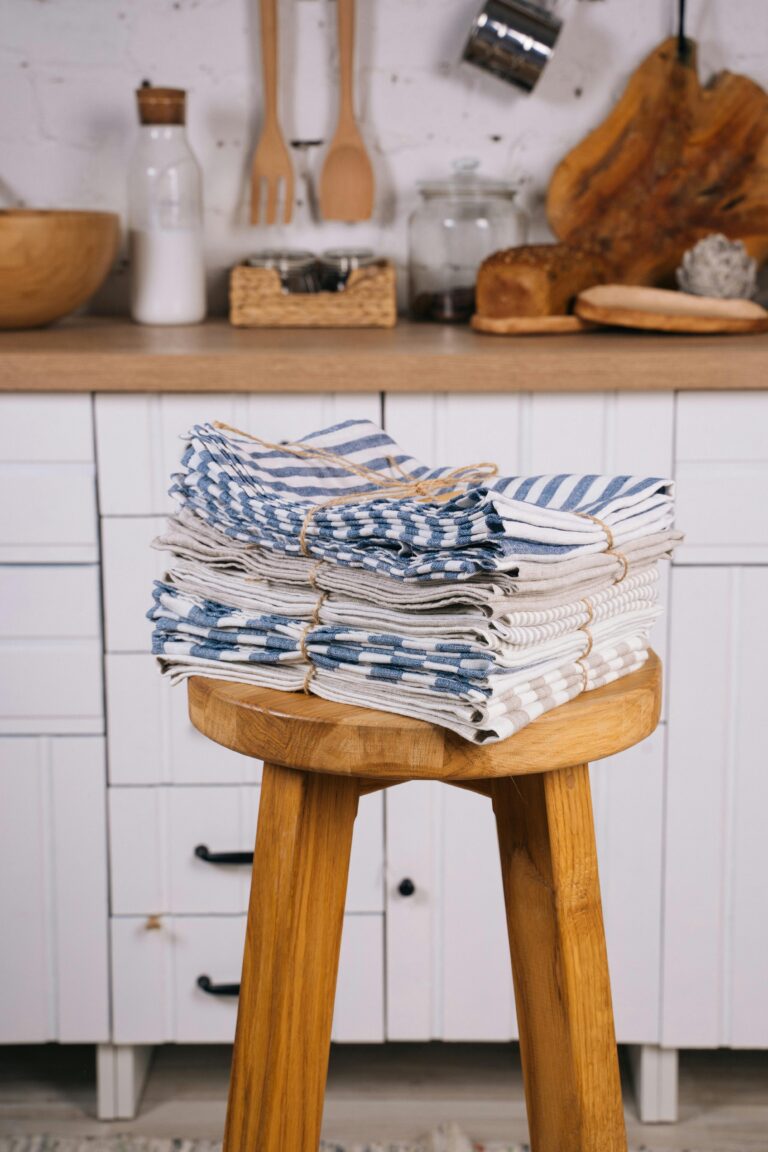


19 Natural Ingredients for Hair Care That Actually Work (And Why You’ll Never Go Back)
Okay, real talk. If you’ve ever stared at the back of a shampoo bottle and felt like you needed a chemistry degree to understand it… you’re not alone. Between the sulfates, parabens, and mystery “fragrance”…

